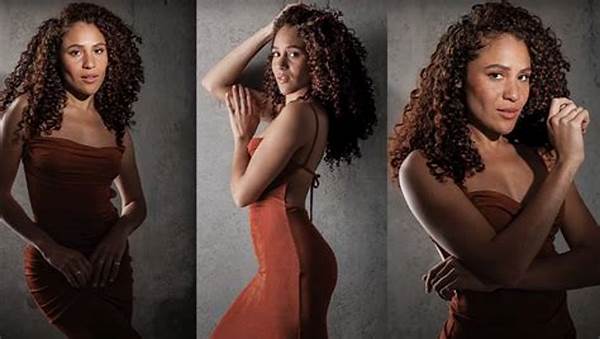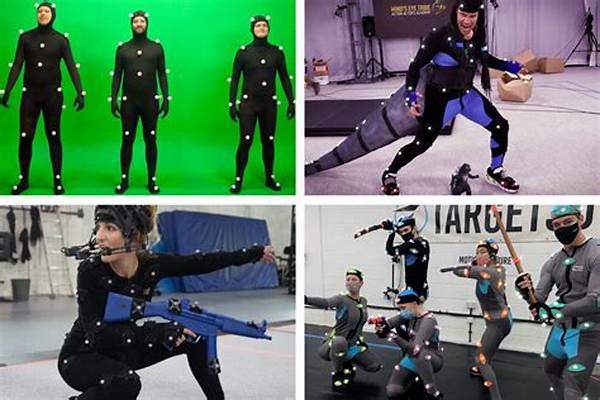Hey there, fellow photography enthusiasts! If you’re anything like me, you know that capturing the perfect portrait isn’t just about having the fanciest camera or the most photogenic model. It’s all about the lighting, baby! And more specifically, mastering directional lighting in portraits can take your photos from “meh” to “wow!”
Read Now : Choosing Outfits For Virtual Conferences
The Basics of Directional Lighting
Alright, let’s start with the basics. Directional lighting is essentially about controlling the direction from which light hits your subject. Think of it like painting with light; where you place your light source can totally transform the mood of your portrait. When mastering directional lighting in portraits, you’ll often hear terms like “Rembrandt lighting,” “split lighting,” or “butterfly lighting.” These refer to classic lighting patterns that photographers use to create drama, highlight textures, or soften features. The key to mastering these techniques is experimentation; move your light source around, watch how the shadows play, and see what brings out the best in your subject. And remember, sometimes breaking the rules yields the most innovative results. It’s all about blending technique with your personal style.
Tips for Mastering the Craft
1. Play with Shadows – Shadows can be your best friend or your worst enemy depending on how you use them. When mastering directional lighting in portraits, try moving your light to different angles and see how shadows change.
2. Natural vs. Artificial Light – Sometimes natural sunlight is all you need, while other times a good ol’ studio lamp works wonders. Experiment to see which one gives you the vibe you’re going for.
3. Mood Setting – Lighting sets the entire mood of your portrait. Want something moody and dramatic? Use side lighting. Something bright and cheerful? Try front lighting.
4. Understanding Angles – The direction of your light can drastically alter your subject’s appearance. Try lighting from above or below to see how it changes the mood.
5. Soft vs. Hard Lighting – Soft lighting is diffused and gentle, while hard lighting creates stark contrasts. Mastering the type of light you need is crucial for fabulous portraits.
Tools of the Trade
Now, let’s get into gear talk. When mastering directional lighting in portraits, having the right tools can make your job a whole lot easier. Basically, if you’re dealing with studio lights, you’ll want a reliable set of softboxes, umbrellas, or even reflectors to control and direct your light effectively. On-location? Natural light can be your best ally. A good reflector can transform the harsh midday sun into a soft, flattering light. Oh, and don’t forget, post-processing software can help you tweak the lighting even more to get those perfect tones. Remember, it’s all about creating that perfect balance between light and shadow, and the right tools can help you do just that effortlessly.
Read Now : Best Image Security Software Free
Common Pitfalls to Avoid
While you’re on your journey to mastering directional lighting in portraits, you might hit a few bumps. One common mistake is using too much direct light, which can wash out your subject’s features. Instead, aim for softer lighting to enhance their natural beauty. Another trap is over-relying on lighting presets; personalized techniques often yield better results.
Capturing Emotion with Light
Let’s dive deeper into the emotional impact of mastering directional lighting in portraits. The right lighting can tell a story and evoke emotions that words simply can’t. Whether it’s the nostalgia whispered by a soft, warm glow or the intrigue conveyed by stark shadows, lighting plays a critical role in storytelling. Using colored gels is another exciting way to add emotion to your portraits. Playing with color can change the entire feel of an image—from cool blues evoking calmness to fiery reds suggesting passion. When you master directional lighting, you give yourself the toolkit to not just capture a face, but to capture a feeling, an essence, a narrative.
The Evolution of Lighting Techniques
Alrighdy, shake things up with a little history lesson, my photography friends! The process of mastering directional lighting in portraits has come a long way. From the Renaissance painters who first understood the emotional impact of chiaroscuro (that’s fancy speak for light-dark contrast), to modern photographers using LEDs and smart lighting systems, it’s been a journey. As tech whizzes past, the fun is all about mixing the old school with the new. Ever tried blending golden hour sunlight with a pop of LED color? No? Give it a go, folks. Being creative with lighting can keep your portrait game super fly and fresh.
Wrapping It Up
There you have it, folks! Mastering directional lighting in portraits isn’t just about technical prowess but also about tapping into your creativity and sense of expression. Whether you’re using natural light or studio setups, or a combo of both, the key lies in experimentation and practice. Don’t be afraid to play around with different setups; sometimes the most unexpected results come from just winging it. So, get out there, grab your gear, and start experimenting. The journey of mastering directional lighting in portraits is filled with challenges and triumphs, but the results are oh-so worth it! Happy shooting!



